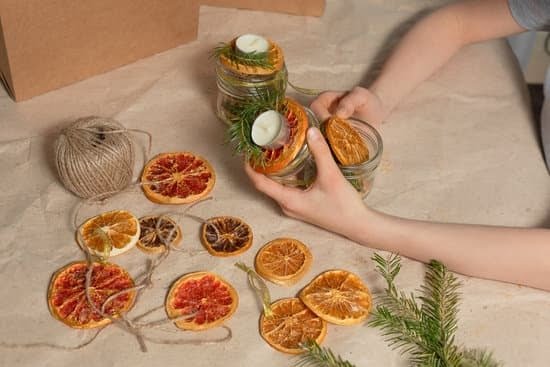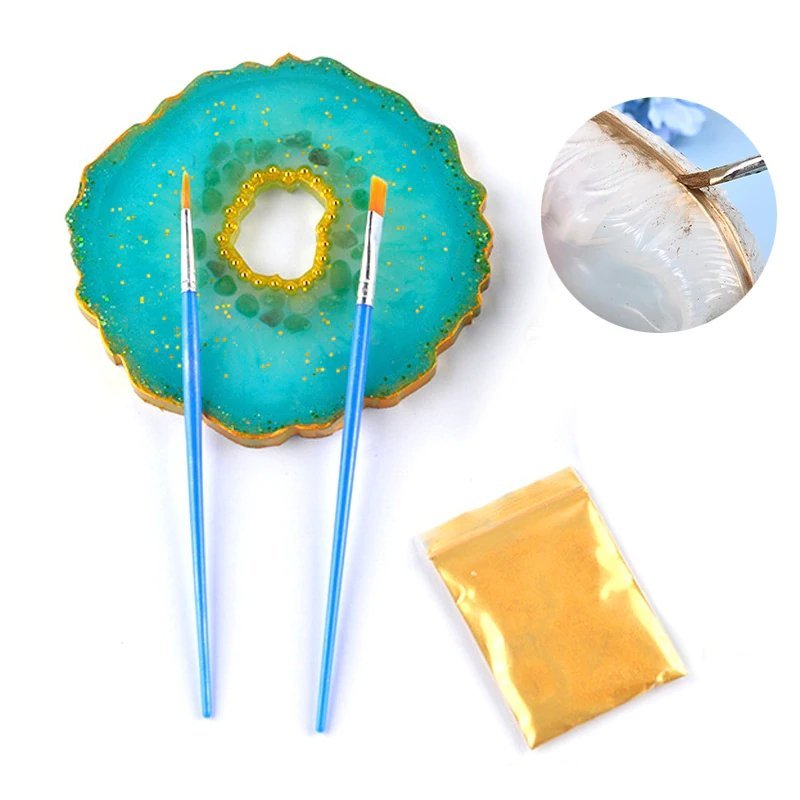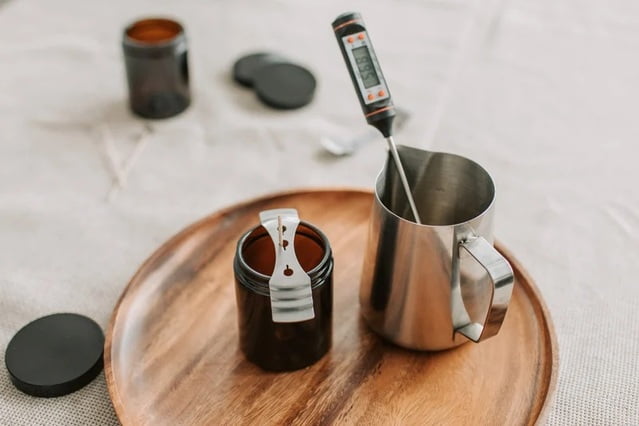When it comes to making candles, achieving the perfect scent throw is crucial. Scent throw refers to the strength and diffusion of fragrance when a candle is lit or unlit. It determines the overall sensory experience and can greatly impact customer satisfaction and sales. Understanding how to enhance scent throw is essential for creating exceptional candles that fill rooms with captivating aromas.
In candle making, scent throw plays a vital role in determining the quality of the final product. It refers to how well a fragrance disperses throughout a space, whether it be a cozy living room or an elegant spa. The strength of scent throw affects not only the ambience but also the user’s overall impression of the candle.
For candle makers, ensuring a strong and satisfying scent throw holds tremendous value. A superior scent throw can make all the difference in gaining loyal customers and creating a successful business. Consumers are drawn to candles that provide long-lasting scents capable of enveloping their surroundings, bringing comfort, relaxation, or invigoration.
In this article, we will delve into various strategies and techniques that will help you achieve the best scent throw when making candles. From selecting the right wax and fragrance oils to proper curing techniques and wick size considerations – every aspect will be explored to optimize your candle-making process for exceptional scent diffusion. Get ready to master the art of scent throw and bring your candle-making endeavors to new olfactory heights.
Choosing the Right Wax for Maximum Scent Throw
When it comes to making candles with a strong and long-lasting scent throw, choosing the right wax is crucial. Different types of waxes have varying capabilities in holding and releasing fragrance oils, which directly impacts the scent throw of the finished candle. In this section, we will discuss the importance of selecting the right wax for maximum scent throw and highlight the benefits of using soy wax.
Waxes made from different materials can affect how well a candle throws its fragrance. Some waxes have better “cold throw,” which refers to the scent that is released when the candle is not lit, while others excel in “hot throw,” which is the scent that fills the room when the candle is lit. It’s important to consider both aspects when choosing a wax for your candles.
One popular choice for achieving maximum scent throw is soy wax. Soy wax has become increasingly popular in recent years due to its many advantages. First and foremost, soy wax has excellent fragrance-holding capabilities, allowing it to create candles with a strong and long-lasting scent throw. Additionally, soy wax burns more cleanly than other types of waxes, reducing soot and ensuring that the fragrance remains pure and untainted.
| Advantages of Soy Wax |
|---|
| Excellent fragrance-holding capabilities |
| Burns more cleanly, producing less soot |
| Made from renewable resources |
| Easier cleanup with soap and water |
By choosing soy wax as your preferred medium for candle making, you can ensure that your candles have a superior scent throw and provide customers with a satisfying olfactory experience. Experimenting with different waxes and fragrance oils can also help you discover unique combinations that elevate the scent throw of your candles even further.
Selecting High-Quality Fragrance Oils for Stronger Scent Throw
When it comes to creating candles with a powerful and lasting fragrance, selecting high-quality fragrance oils is of utmost importance. The right fragrance oil can significantly enhance the scent throw of your candles, ensuring a pleasant olfactory experience for your customers.
To ensure you choose the best fragrance oils for optimal scent throw, there are several factors to consider. Firstly, it’s important to select premium fragrance oils that are specifically designed for candle making. These oils are formulated to withstand the heat of the wax and maintain their potency throughout the burning process. It’s worth investing in reputable brands that offer a wide range of fragrances known for their superior scent throw.
Additionally, evaluating the scent throw potential of different fragrance oils can be helpful when making your selection. One way to gauge this is by smelling the fragrance oil directly from the bottle to get an initial impression of its strength and quality. Another useful technique is checking reviews and customer feedback on specific fragrance oils to see if they are known for their strong scent throw.
Furthermore, experimenting with different combinations of fragrance oils can also lead to unique scents that have a stronger scent throw. Consider blending complementary fragrances or adding small amounts of essential oils to enhance the overall effect. Be sure to keep detailed records of your experiments so you can replicate successful formulas in future batches.
Optimal Fragrance Load for Maximum Scent Throw
When it comes to achieving the best scent throw in candle making, finding the optimal fragrance load is crucial. The fragrance load refers to the percentage of fragrance oil used in relation to the wax amount. The right balance ensures that your candles release a strong and appealing aroma when burned. Here are some important considerations for determining the optimal fragrance load for maximum scent throw:
- Follow recommended guidelines: It is recommended to use a fragrance load of 6-10% in most types of waxes for optimal scent throw. However, it’s important to check with your specific wax supplier for their recommended guidelines as they may vary.
- Consider personal preferences: While there are general guidelines, personal preferences also play a role in determining the perfect fragrance load. Some individuals prefer a stronger scent, while others may prefer a more subtle aroma. You can experiment with different percentages until you achieve the desired intensity.
- Beware of overloading: Using too much fragrance oil can actually hinder scent throw instead of enhancing it. Overloading the wax can lead to poor burn performance and even produce off-putting smells. It’s essential to strike a balance and avoid exceeding the recommended maximum fragrance load specified by your wax supplier.
Finding the optimal fragrance load may require some trial and error, but taking these factors into consideration will help you achieve a well-balanced scent throw in your candles.
In addition to fine-tuning the fragrance load, there are other techniques you can employ to further enhance scent throw in your candles. These include proper wick selection, using high-quality fragrances oils, and strategic candle placement and container choices. By experimenting with different combinations and following industry best practices, you can master the art of scent throw and create exceptional candles that captivate customers with their aromatic experience.
Proper Candle Curing Techniques for Stronger Scent Throw
Candle curing is a crucial step in the candle-making process that is often overlooked but plays a significant role in achieving a stronger scent throw. Curing refers to the time it takes for the fragrance oil to fully blend with the wax and develop its maximum scent potential.
By allowing your candles to cure properly, you can ensure that they release a more potent and long-lasting aroma when burned. Here are some essential steps and techniques for proper candle curing:
Step 1: Cooling and Settling
After pouring your candles, it’s important to let them cool and settle undisturbed. This process usually takes at least 24 hours but may vary depending on the size of your candles and the type of wax used. During this time, avoid moving or touching the candles as any disruption can affect their overall performance.
Step 2: Storage
Once your candles have cooled and settled, it’s time to move them into a designated storage area where they can continue to cure. Choose an environment that is cool (around 60°F to 75°F) and away from direct sunlight, as heat and sunlight can cause discoloration or fading of fragrances.
Step 3: Time Allotment
The duration of candle curing can vary depending on several factors, including the type of wax used, the fragrance load in your candles, and personal preference. However, most candles benefit from a minimum curing period of one week. For optimal scent throw, consider extending this period up to two weeks or even longer for certain fragrances.
Step 4: Testing
Throughout the curing process, it’s important to periodically test your candles’ scent throw before deeming them fully cured. Light each candle individually in a well-ventilated space and assess the strength and longevity of the aroma. Keep a record of your findings for future reference.
By following these candle curing techniques, you can ensure that your candles reach their full potential in terms of scent throw. Remember that patience is key, and allowing sufficient time for the fragrance oil to meld with the wax will result in a more satisfying aromatic experience for your customers.
Utilizing the Right Wick Size for Better Scent Throw
One of the crucial factors that affect scent throw in candles is the size of the wick used. The wick not only determines how efficiently the candle burns but also plays a significant role in dispersing the fragrance into the surrounding space. Therefore, selecting the appropriate wick size is essential for achieving better scent throw in candles.
When it comes to choosing the right wick size, it is important to consider various factors such as candle diameter and type of wax being used. A wick that is too small may result in a weak scent throw, while a wick that is too large can lead to an excessive flame and poor burn performance.
It is recommended to refer to a wick manufacturer’s guidelines or perform small-scale test burns to determine the optimal size for your specific candle.
Different types of candles require different wick sizes. For example, container candles typically require smaller-sized wicks compared to pillar or votive candles. This is because container candles have a limited amount of surface area exposed to air, making it necessary for the fragrance oils to be dispersed efficiently within this confined space. On the other hand, pillar or votive candles have more exposed wax surface area and generally require larger-sized wicks to ensure proper burn and scent diffusion.
To further enhance scent throw in your candles, you can consider using double-wicking techniques. Double-wicking involves using two smaller-sized wicks instead of one larger-sized wick in containers or larger diameter candles. This allows for increased fragrance release and a wider melt pool, resulting in better scent distribution.
Table: Wick Recommendations based on Candle Diameter
| Candle Diameter (inches) | Recommended Wick Size (number) |
|---|---|
| 2-3 | 6-8 |
| 3-4 | 10-12 |
| 4-5 | 14-16 |
Using the right wick size is crucial for achieving better scent throw in candles. By considering factors such as candle diameter, wax type, and wick recommendations, you can optimize the fragrance diffusion and ensure a delightful olfactory experience for your customers. Proper selection of the wick size not only enhances scent throw but also contributes to overall candle performance.
Optimizing Candle Containers and Placement for Improved Scent Throw
When it comes to achieving the best scent throw in candle making, the choice of container and its placement play a crucial role. The right candle container can enhance the diffusion of fragrance, allowing it to spread more effectively throughout the space.
Additionally, strategic placement of candles can maximize the scent throw in different environments. In this section, we will explore some tips on selecting candle containers that promote optimal scent diffusion and provide guidance on placing candles for maximum impact.
Choosing Candle Containers for Better Scent Diffusion
The first step in optimizing scent throw is selecting the right candle container. The material and design of the container can have a significant impact on how well it allows the fragrance to disperse into the surrounding area. Glass containers are often recommended as they do not absorb or affect the scent, allowing it to permeate freely. Additionally, glass containers typically have a larger surface area compared to other materials, facilitating better diffusion of fragrance.
Another aspect to consider is the diameter of the container opening. A wider opening allows for more air circulation, enabling better dispersion of scent molecules into the room. However, keep in mind that candles with wider openings may require larger wicks to ensure proper burning and prevent tunneling.
Strategic Placement for Maximum Scent Throw
Once you have chosen the ideal candle container, placing it correctly further enhances scent throw. Certain factors like airflow, room size, and layout should be taken into account when deciding where to position your candles.
To optimize scent diffusion throughout a space, place candles near entryways or windows where there is natural airflow. As air moves past the lit candle, it carries away fragrance molecules and spreads them more effectively. Additionally, positioning candles at varying heights within a room can help distribute scent evenly.
Consider using multiple smaller candles instead of one large one if you want to cover a larger area with fragrance. By placing these candles strategically throughout the space, you can create a more consistent and powerful scent throw.
Precautions for Avoiding Scent Throw Issues
When it comes to achieving the best scent throw in candle making, it is essential to be aware of the potential issues that can arise. By taking certain precautions, you can avoid these problems and ensure that your candles have a strong and pleasing fragrance. Here are some common mistakes to avoid and troubleshooting techniques to overcome scent throw issues.
One common mistake that can hinder scent throw is using an incorrect temperature when adding fragrance oil to the wax. It is important to follow the recommended temperature guidelines provided by the fragrance oil manufacturer. If the temperature is too high or too low, it can affect the performance of the fragrance in the candle, resulting in a weak scent throw. To avoid this issue, always use a reliable thermometer to measure the temperature accurately.
Another factor that can affect scent throw is improper wick trimming. Trimming the wick too short or not trimming it at all can lead to poor burn performance and may cause inadequate heat for proper fragrance release. It is crucial to trim your wick before each use according to the recommended length provided by the wick manufacturer. This will ensure a steady flame and optimal scent throw.
Additionally, poor container selection can impact scent diffusion. Choosing containers with narrow openings or lids that restrict air circulation can inhibit the release of fragrance into the surrounding space. When selecting candle containers, opt for ones with wider openings that allow for better air flow and scent dispersion.
If you encounter any issues with scent throw despite following these precautions, there are some troubleshooting techniques you can try. One method is adjusting the fragrance load by increasing or decreasing the amount of fragrance oil used in your candles. Be mindful that increasing the percentage may not always result in stronger scent throw as it can lead to other problems like poor burn performance or overpowering fragrances.
Conclusion
In conclusion, understanding and achieving the best scent throw in candle making is key to exceptional success in this craft. The term “scent throw” refers to the strength and diffusion of fragrance when a candle is burned, and it plays a significant role in customer satisfaction and sales.
By focusing on various aspects such as choosing the right wax, selecting high-quality fragrance oils, finding the optimal fragrance load, utilizing proper curing techniques, selecting the right wick size, optimizing candle containers and placement, and avoiding common mistakes, one can master scent throw and create candles that delight customers.
Choosing the right wax is crucial for maximizing scent throw. Soy wax is particularly beneficial as it blends well with fragrance oils and provides excellent hot scent throw. Additionally, selecting high-quality fragrance oils is essential. Premium oils ensure stronger scent throw compared to lower quality options. Evaluating fragrance oils based on their scent throw potential before purchasing them can help achieve better results.
Determining the optimal fragrance load is another vital aspect of enhancing scent throw. Following recommended guidelines for fragrance oil to wax ratio allows for optimal performance. However, adjusting the fragrance load based on personal preferences can further fine-tune the desired scent throw intensity.
Properly curing candles also contributes to stronger scent throw. Allowing candles to cure ensures that they reach their full potential in terms of scent diffusion. Following step-by-step instructions for correct curing methods can enhance overall performance and improve customer satisfaction.
The selection of wick size plays a significant role in determining scent throw as well as overall candle performance. Choosing an appropriate wick size based on factors like candle diameter and desired scent throw is important for achieving optimal results.
Strategic placement of candles in different spaces can maximize their scent throw potential. Choosing candle containers that promote better scent diffusion also contributes to a more enjoyable aromatic experience for customers.
Finally, by being aware of common mistakes that hinder scent throw and employing troubleshooting techniques to overcome these issues, one can achieve exceptional success in candle making. Experimentation, refining techniques, and continuously striving to achieve the best scent throw possible will lead to increased customer satisfaction, higher sales, and a rewarding candle-making journey overall.
Frequently Asked Questions
How do you make candles throw more scent?
To make candles throw more scent, there are a few techniques you can try. First, using fragrance oils that are specifically formulated for candle making can help increase the scent throw. These oils are designed to have stronger and longer-lasting fragrances compared to essential oils or other fragrance sources. Additionally, adding the fragrance oil at the right temperature during the candle-making process is crucial.
It is important to add the fragrance oil when the wax has cooled down a bit but is still liquid enough to incorporate the scent evenly. This allows the fragrance to bind well with the wax and disperse throughout the candle as it burns. Lastly, using high-quality wicks that burn evenly and reach a full melt pool can help maximize the scent throw of your candles.
What makes a candle have a good throw?
A good throw in a candle refers to how well it fills a room with its fragrance when lit. Several factors contribute to achieving a good scent throw. First and foremost, choosing high-quality fragrance oils or essential oils that are potent and long-lasting is key.
The concentration of fragrance used in the candle plays a significant role in its throw; therefore, using an appropriate amount of fragrance for your specific type of wax is important. Another factor for a good throw is ensuring your wick selection is suitable for your candle size and type of wax being used. An adequately sized wick will provide an even burn, allowing the fragrance to be released consistently throughout the entire burning process.
How do you get a high scent throw in soy candles?
Getting a high scent throw in soy candles requires attention to several factors during their creation. One essential aspect is using high-quality soy wax that has been specifically formulated for optimal scent diffusion. Ensure you select soy wax that has excellent hot throw characteristics, as this will significantly enhance scent dispersal when burned. The next step is adding an adequate amount of fragrance oil during candle making – too little may result in weak scent throw while too much may negatively impact how well your candle burns and melts.
Finding the right balance is crucial. Additionally, paying attention to the wick size and material is important for achieving a high scent throw in soy candles. Properly sized wicks made of materials that facilitate efficient fragrance release can promote better scent distribution in the surrounding space as the candle burns.

Welcome to my candle making blog! In this blog, I will be sharing my tips and tricks for making candles. I will also be sharing some of my favorite recipes.





